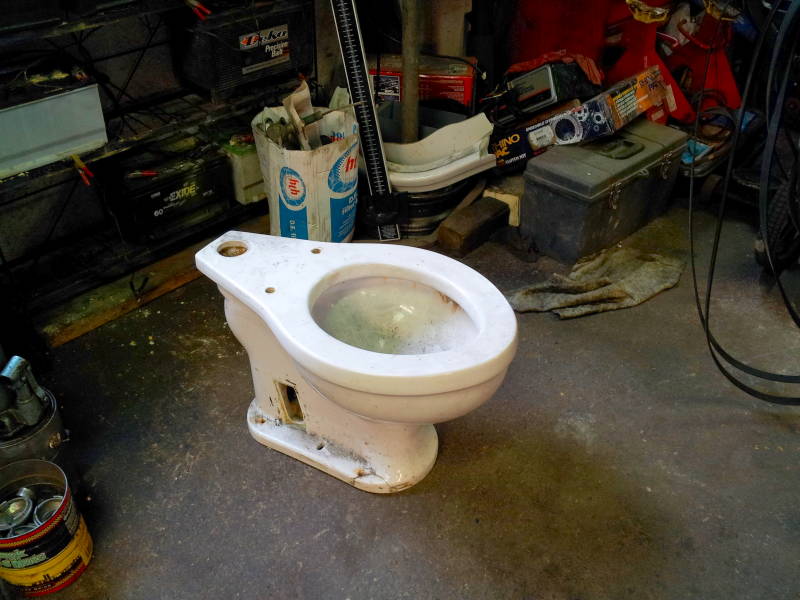The hulls, however, are quite different.
The Savarona is 2.50 m wider. 13,50 / 16,00 . More a real yacht than an aviso, a racer. You can see it in the photos.
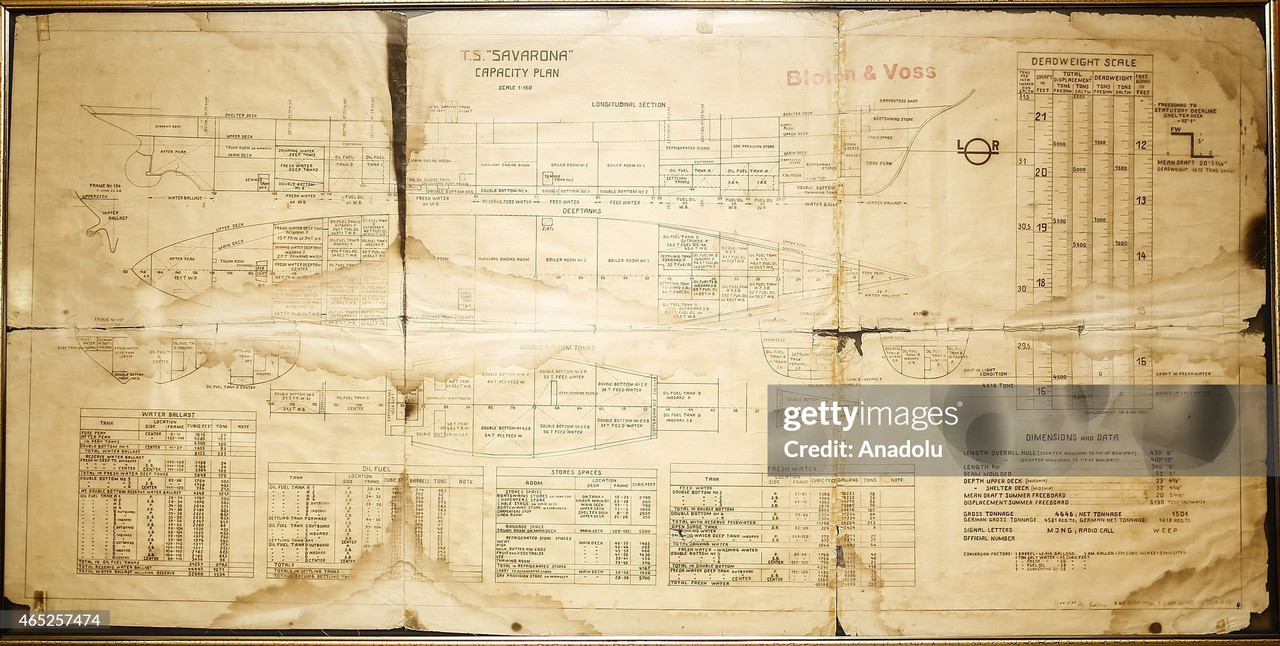
Plans for a cardboard model?
https://www.booklooker.de/B%C3%BCcher/B ... EdI6r01ZZh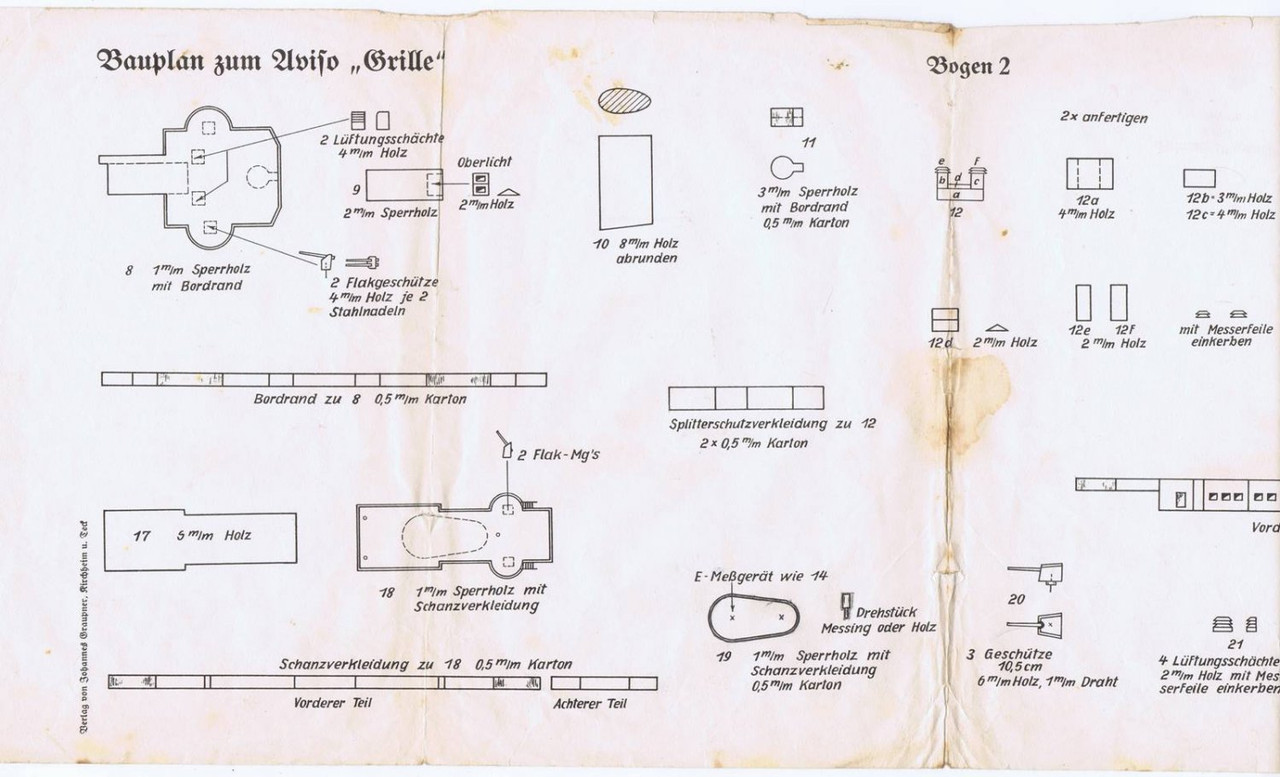
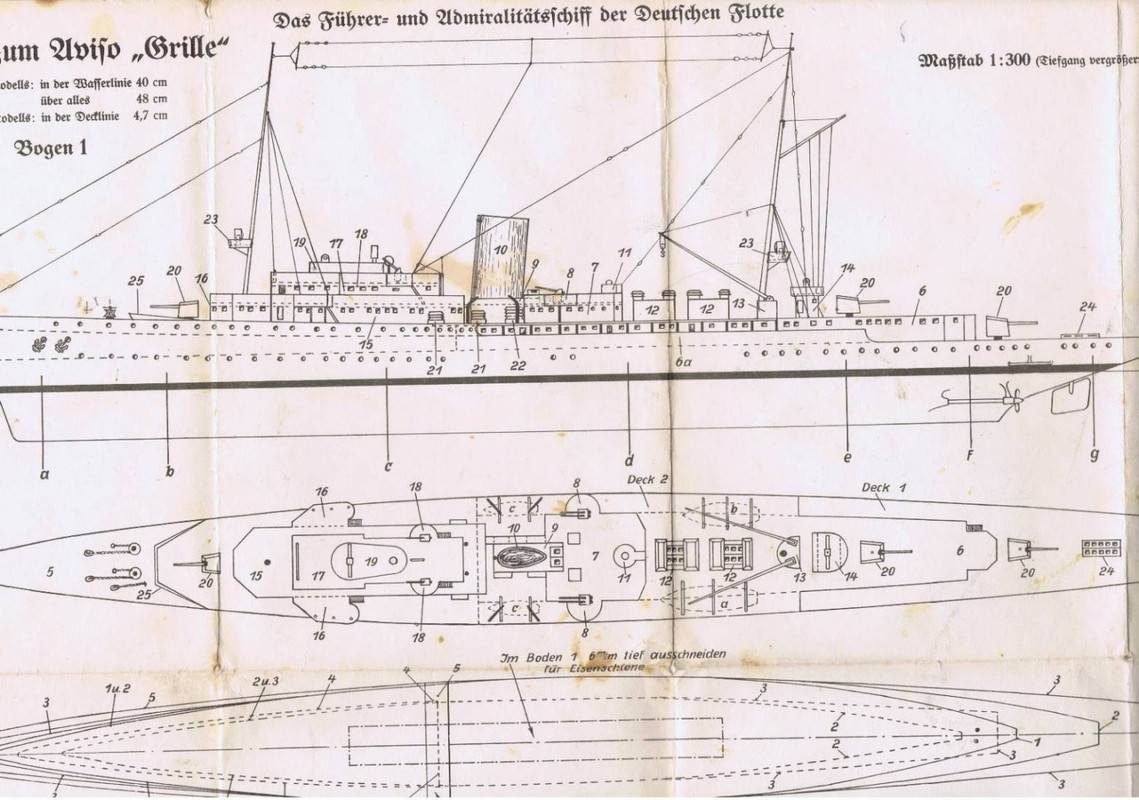
Two more photos of Grille. The second taken in New York, of course.
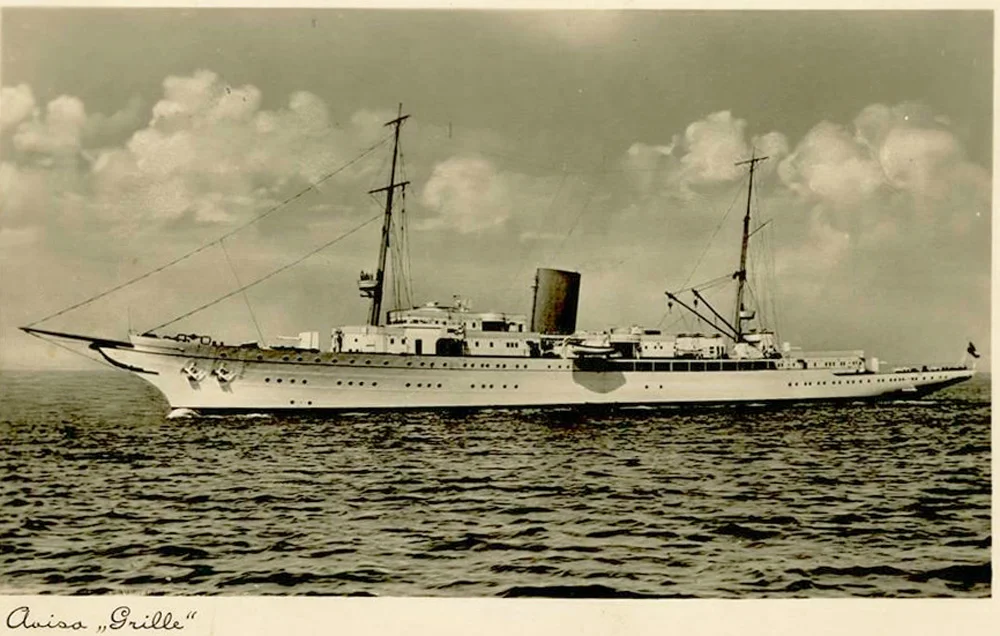
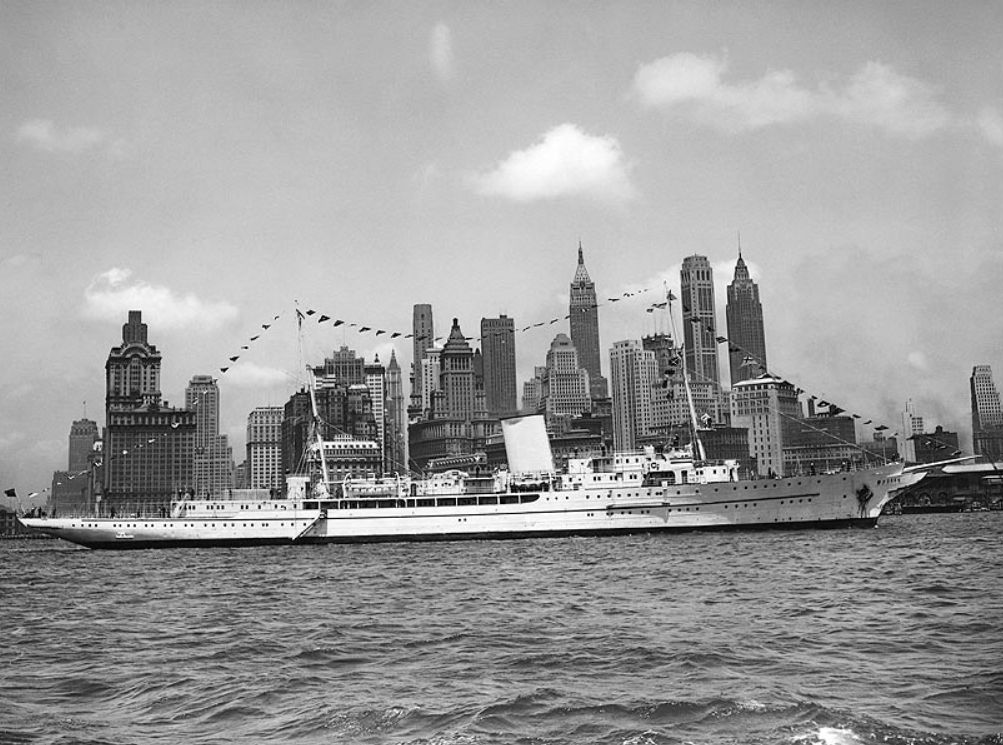
Doing further research, I came across this rather bad photo of Grille in the reserves of the National Maritime Museum in Greenwich, London.
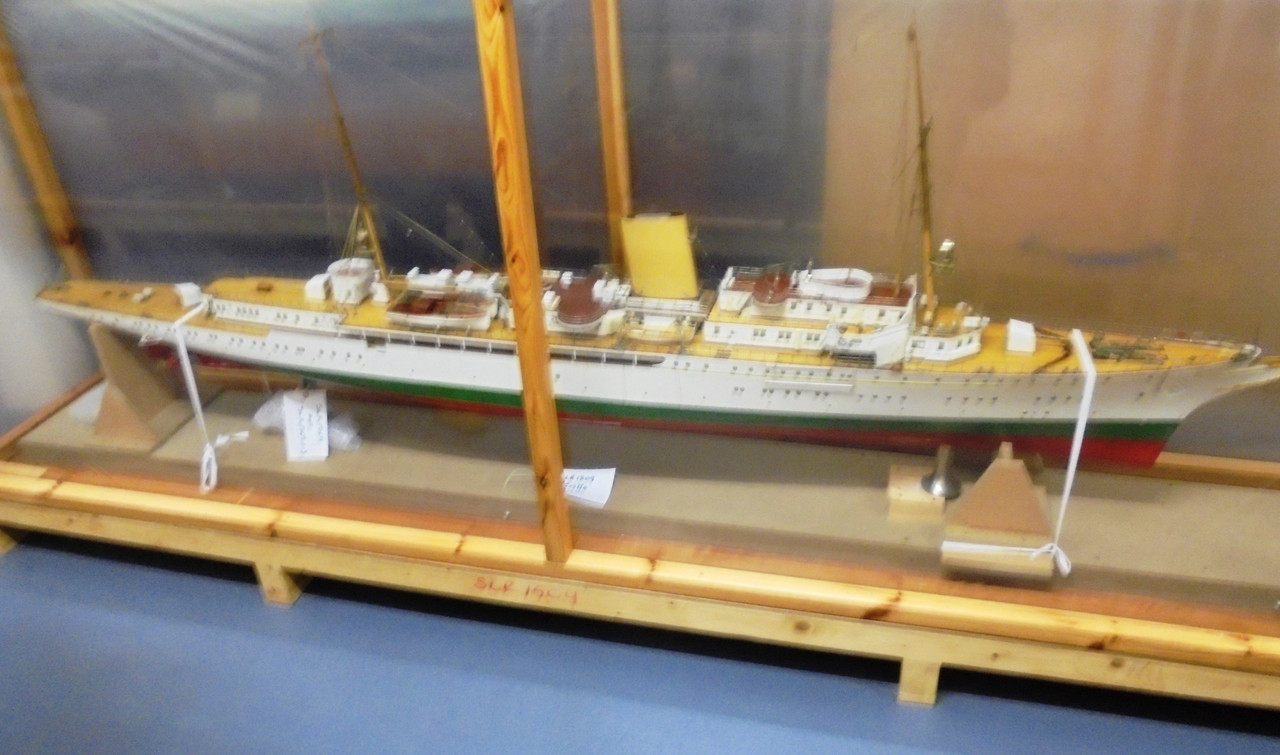
Digging a little deeper, not easy as the name Grille is not common enough, I found its nomenclature in the museum archives, and a rare photo showing this model and therefore the ship's living works, which remained a mystery, we can see that they are quite different from those of the Savarona.
https://www.rmg.co.uk/collections/objec ... ject-67468"A contemporary builder's full hull model of the 'Grille' (1934), a German steam yacht, built to a scale of 1:50. The model is decked, equipped and rigged. ‘Grille’ is written on the port and starboard stern quarters and a plaque on the stern deck is inscribed ‘MFM RIIB428’. As is typical of this style of model making, a number of the metal fittings have been silver-plated. This was a feature developed during the later part of the 19th century when models were produced for display at the large international exhibitions by shipbuilders and shipowners advertising their services. The yacht was built by Blohm & Voss in Hamburg and was used mainly for training young naval cadets, before becoming Hitler’s personal yacht. He used it for reviewing the German Fleet on several occasions and it was from its deck that Admiral Dönitz announced the Fuhrer’s death on 1 May 1945."
 https://www.rmg.co.uk/collections/objec ... ect-533503
https://www.rmg.co.uk/collections/objec ... ect-533503 https://www.rmg.co.uk/collections/objec ... ect-558987
https://www.rmg.co.uk/collections/objec ... ect-558987
Another rare photo that is remarkable for its detail:
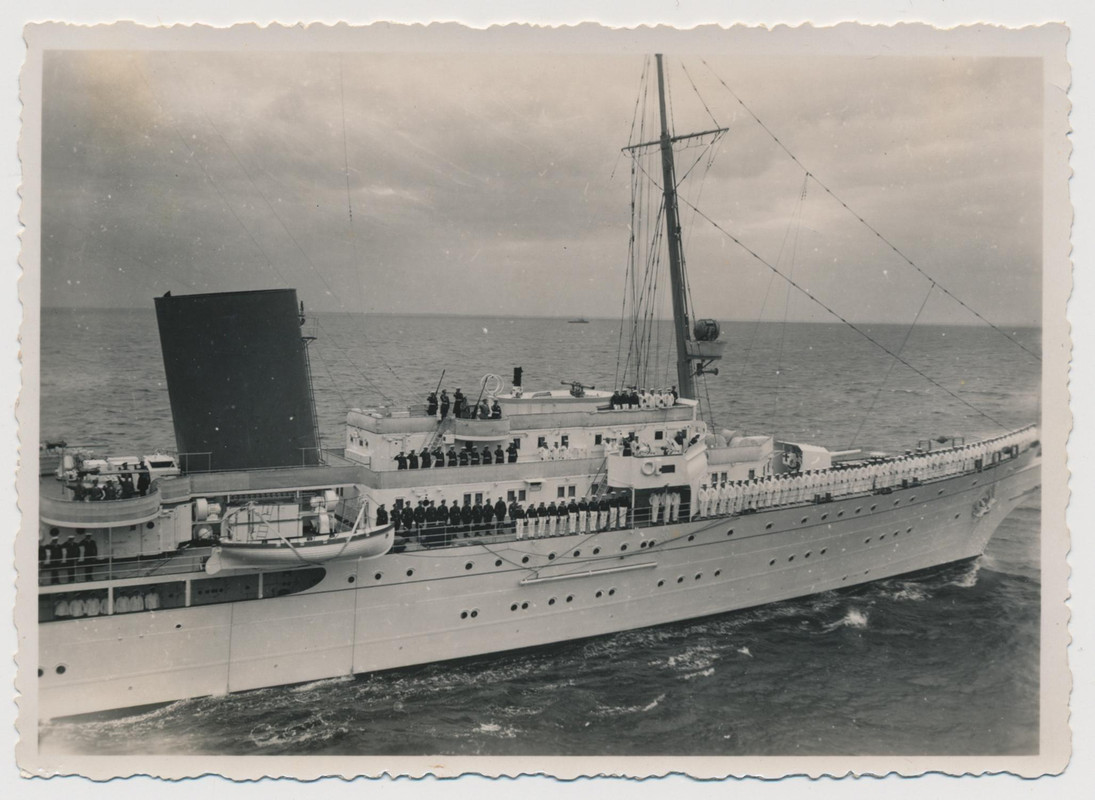
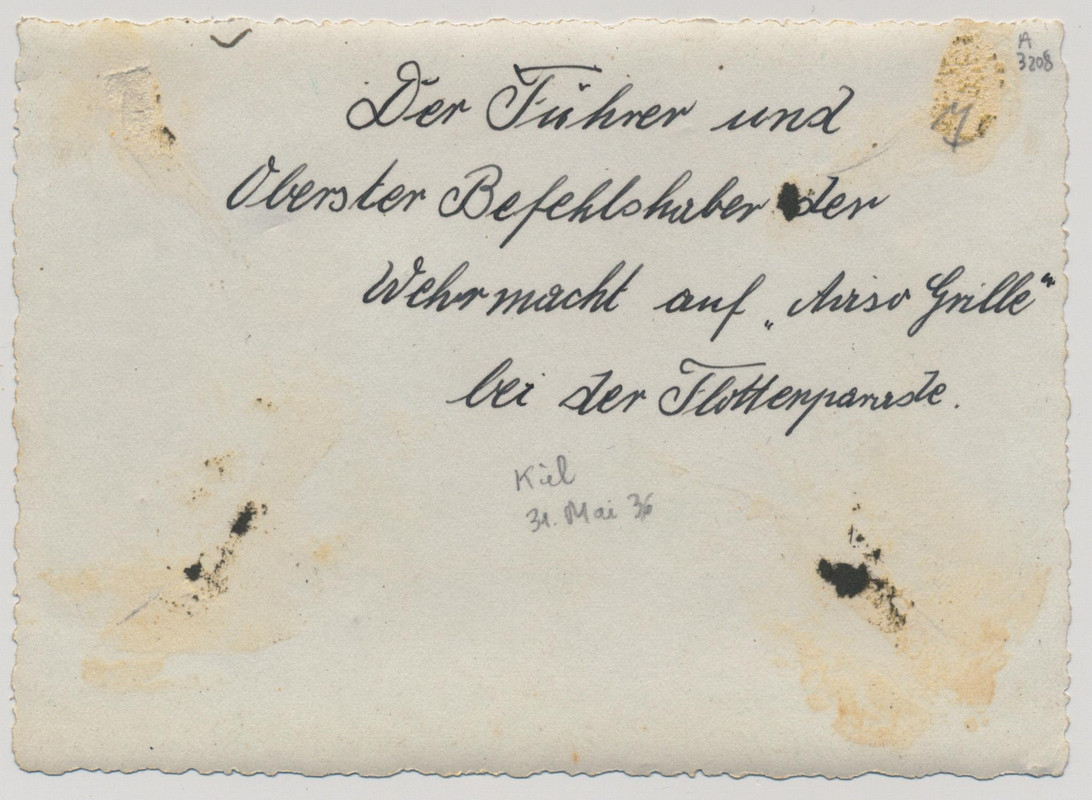
Others:
https://www.maritimequest.com/yatchs/gr ... page_1.htmAugust 22, 1938: Hungarian regent Miklos Horthy and Adolf Hitler (near the AA gun position above the main decks ahead of the smokestack) on Grille during a fleet review after the launch of Prinz Eugen.
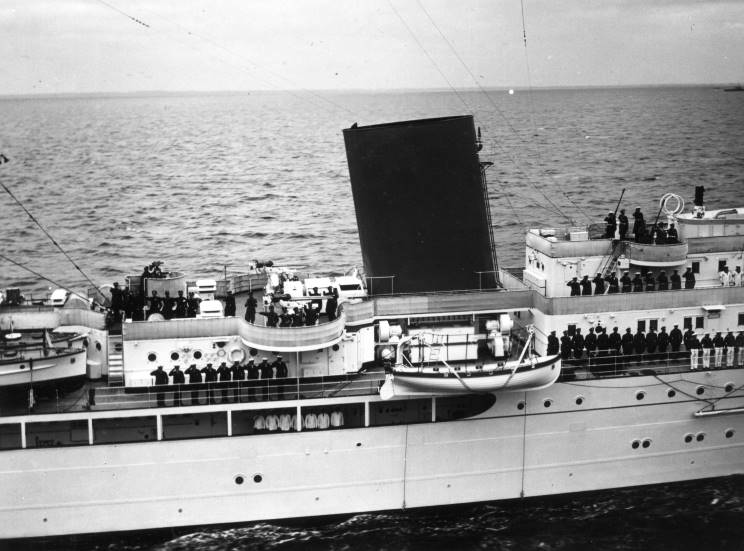
August 22, 1938: Hungarian regent Miklos Horthy and Adolf Hitler seen on Grille during a fleet review after the launch of the Prinz Eugen.
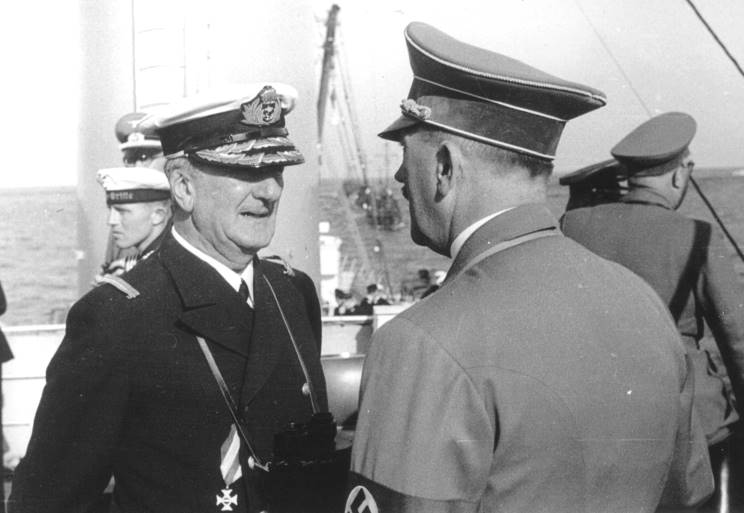
Stern before 1937.
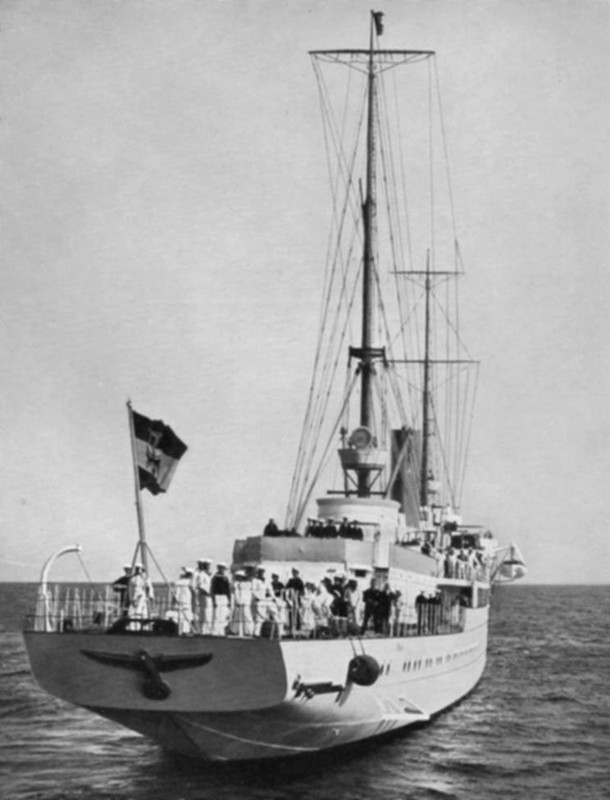
Grille cruising Admiral Scheer, probably August 22, 1938.
(Photo courtesy of Alexander Monreal)

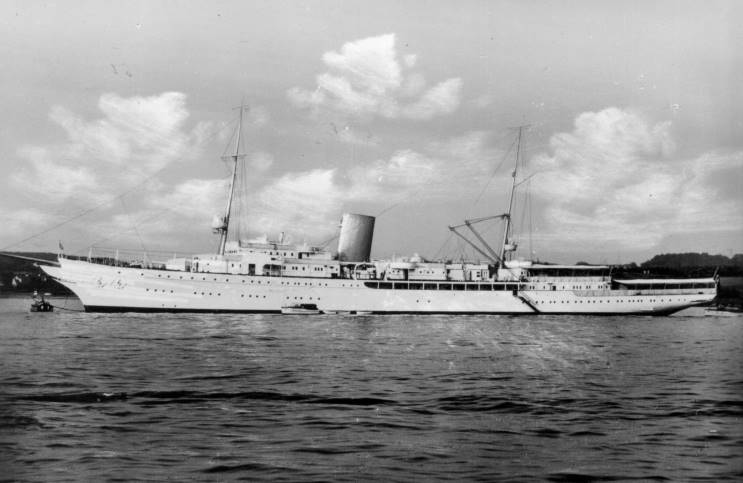
Imperial War Museum, UK.
Hitler's yacht “Grille” at Asenfjord, near Trondheim.
https://www.iwm.org.uk/collections/item/object/3262
Opposite the bar in the “Grille” salon, it wasn't exactly the finest luxury...
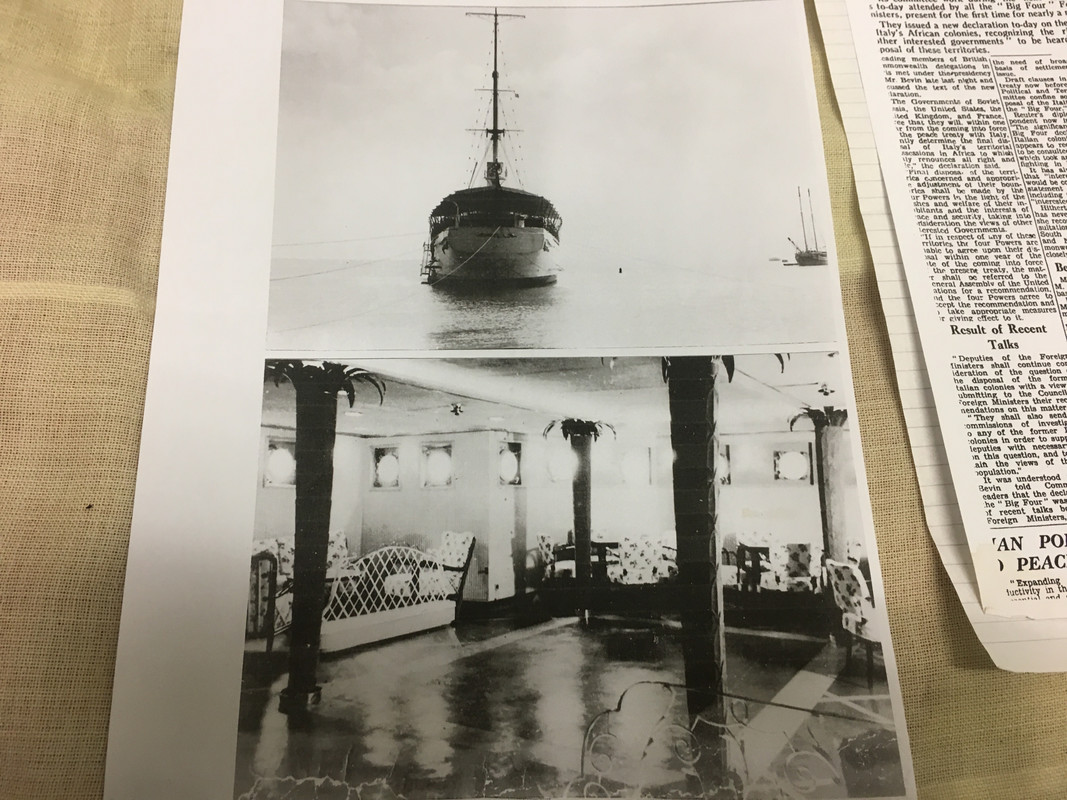
Article:
[The day Hitler's flagship docked in Hull[/b].
https://www.thehullstory.com/allarticle ... ht-in-hullNOT THE DESTINATION ITS OWNER HOPED FOR: Hitler's flagship yacht, Grille, during its eight-day stay in Hull
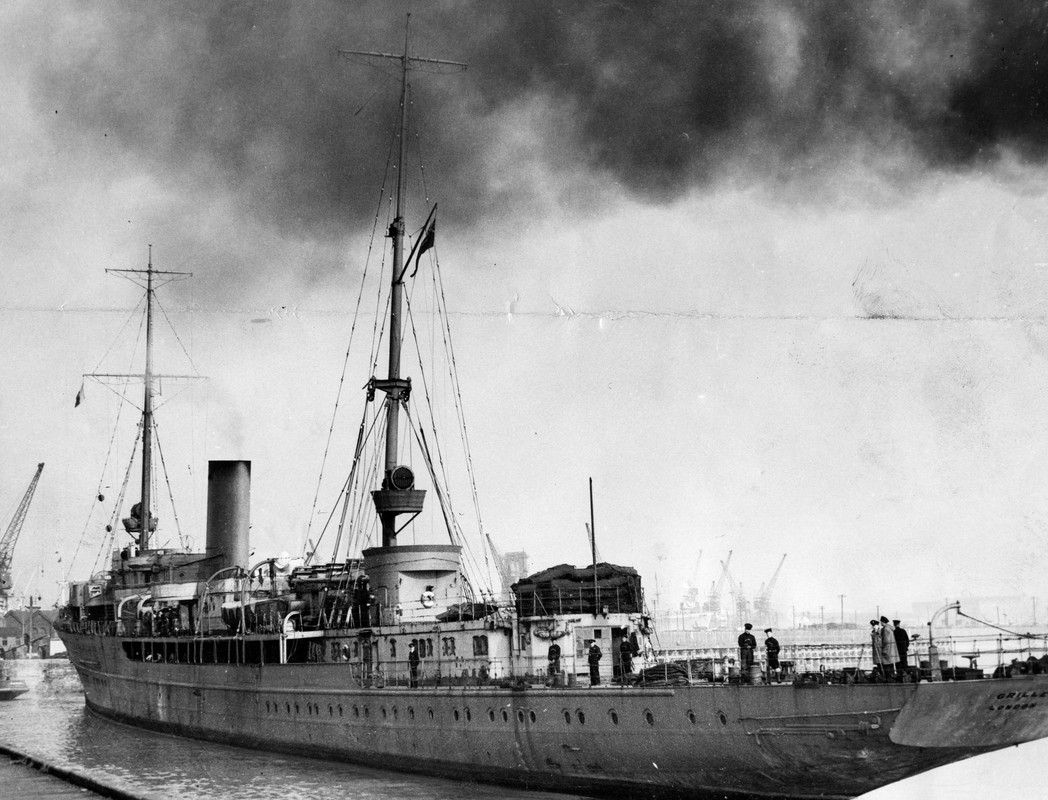
On two consecutive nights in May 1941, almost 400 people were killed in what would prove to be the most devastating bombing raids ever recorded in Hull during the Second World War.
The Luftwaffe attacks on the city - and in particular its docks - came as German military leaders continued to plan an invasion of Britain if a negotiated surrender could not first be achieved.
The plan - known as Operation Sea Lion - envisaged a victorious Adolf Hitler sailing up the Thames before accepting the British government's surrender at a ceremony in Whitehall.
However, the RAF's success in the Battle of Britain was to change the Germans' minds. Unable to establish air superiority, the Germans turned their attention to the Russian front and abandoned their invasion plans.
Ironically, the only major German military hardware to ever reach Britain intact was the ship on which Hitler had planned to be on that triumphant cruise up the Thames. Less than two years after the end of the war, it arrived in tow in Hull's Alexandra Dock, which must have been a bittersweet moment for those who witnessed it. Here's the story of the Grille.
Built in 1935 for the Kriegsmarine, this 3,490-ton steamship was designed both as a flagship yacht for Hitler and other leading figures of the Nazi regime, and as an auxiliary mine anchor equipped with three naval guns and eight anti-aircraft guns. The ship was also initially fitted with experimental high-pressure steam turbines and a boiler system to be tested in sea trials before being installed on new warships.
In the end, the boilers could not provide the maneuverability required by destroyers, and the idea was abandoned, leaving Grille with a unique but technically complex source of power.
With a crew of 248, it was the largest ship of its type in the world and the flagship of Hitler's naval forces. As such, she carried the German state delegation to the coronation of King George VI in 1937, calling at Southampton and Spithead as part of the voyage.
Hitler himself was a frequent user of the Grille, often spending up to four nights on board during short cruises despite an apparent aversion to the sea. The ship was used to entertain VIP guests, including Mussolini and foreign ambassadors, as well as to survey the growing Nazi fleet in the pre-war years.
At Hitler's insistence, the Grille's hull was painted white with gold trim on the bow and stern, while the funnel was bright yellow. He called it “The White Swan of the Baltic”, while the crew wore white uniforms.
POWER: The captain's room aboard the Grille
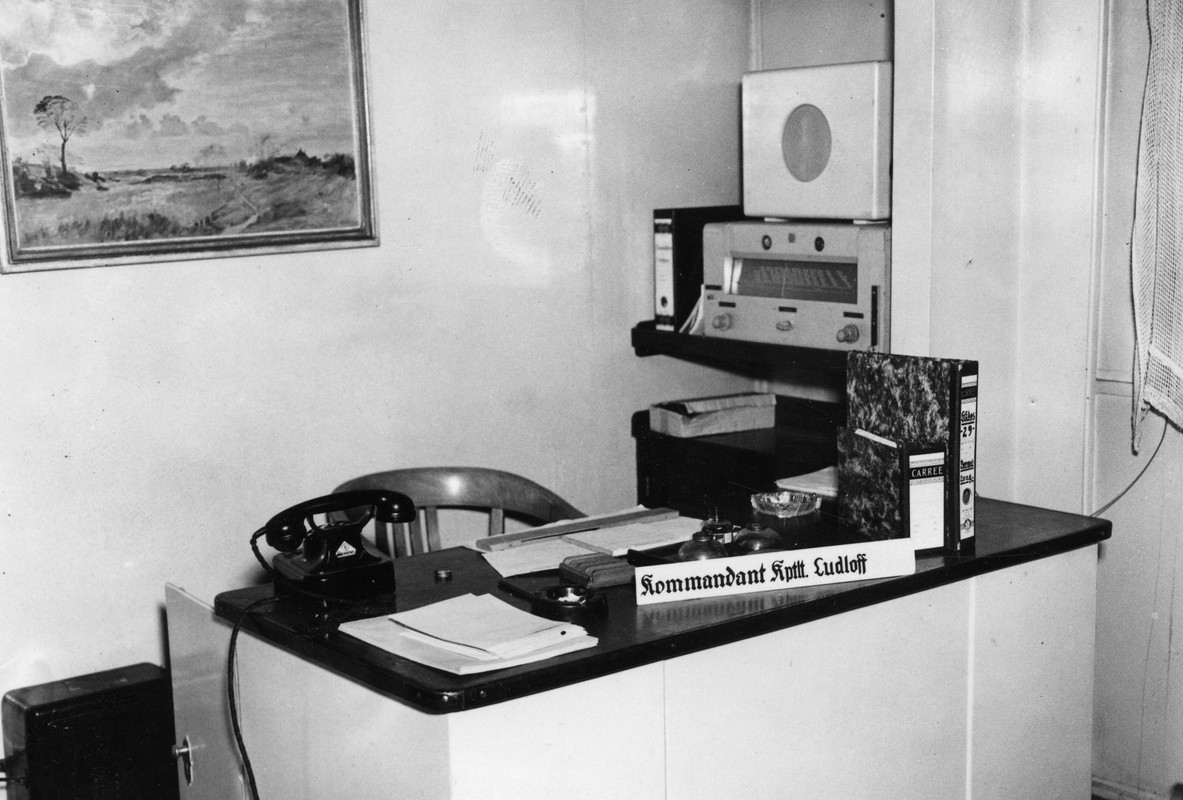
A myth would later develop around the ship's allegedly luxurious fittings and equipment, perhaps fueled by the fact that the famous German architect Fritz Breuhaus designed her interior after working on the luxury liner Bremen and the interior of the ill-fated airship Hindenburg .
The reality was somewhat different. Although the ship had a small number of well-appointed cabins the size of small hotel suites, as well as rooms for up to 35 passengers, it was also equipped for military use. When war broke out, she was deployed as a minesweeper and patrol boat in the Baltic Sea, tasked with spotting enemy merchant ships and warning of nearby submarines.
The Grille then switched to mine-laying in the North Sea as part of Operation Sea Lion, providing defensive cover in anticipation of a counter-attack by British naval forces.
In 1942, her role changed again when she was withdrawn from front-line military service to become the floating headquarters of the commander of German naval forces in occupied Norway. By this time, her distinctive color had been changed to war gray.
German submarine attacks were monitored from her dining room. Later, as the war entered its final phase, Grand Admiral Karl Donitz directed the operations of the entire navy from the same living room.
At the time, 400 men were crammed aboard, using nearly 200 high-powered radio transmitters and receivers. The ship was even equipped with its own automated telephone exchange, with direct lines to Hitler's headquarters in Berlin.
According to reports, Donitz officially announced Hitler's death on the deck of the Grille on May 1, 1945 and, acting on orders from the late Führer, also announced that he had taken command of Germany and its fighting forces. What is known with certainty is that on May 17, after the German surrender, a British naval boarding party took command of the Grille to organize the escorted passage of five surface ships and 15 submarines to Scotland.
With both engines out of action after being deliberately sabotaged prior to surrender, and only one boiler in operation, the Grille was towed to Rosyth with British officers commanding her German crew. She was then towed to Hartlepool and moored in a coal basin. A year later, the Admiralty put her up for sale.
By this time, the Grille had become a tourist attraction. For a fee of one shilling for adults and six pence for children, half-hour tours of the ship were organized, with profits split between local naval cadets and the Mission to Seamen.
Those hoping for a glimpse of Nazi-era luxury were disappointed. Local journalist Brian Belshaw wrote: “On the door of a stateroom just a few yards from Hitler's suite is a large white label. It reads: 'Leading Stoker Evans'.
British sailors in the ship's all-electric galley
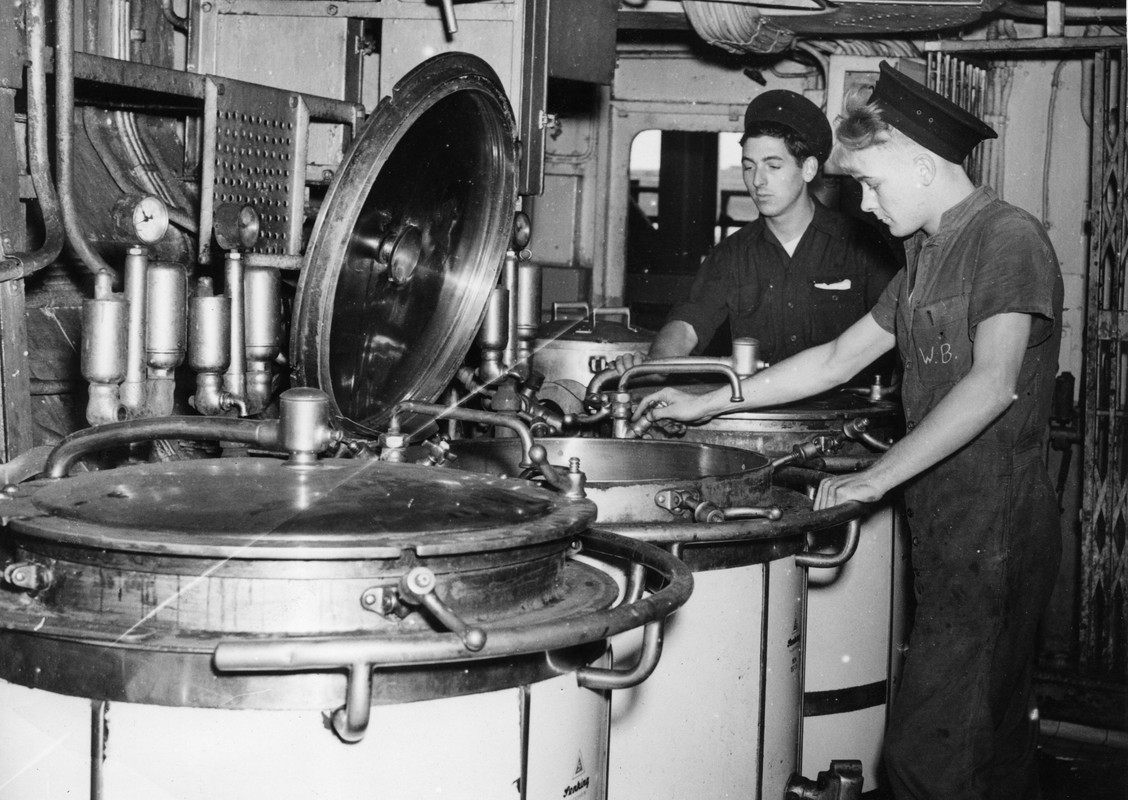
“I never met Driver Evans, but I know how he felt when he came aboard the Grille as a member of the British crew. I know how he made the most of those remarkable circumstances and with what satisfaction he deposited that boldly written proclamation on the door that could have been opened by one of Hitler's special guests - perhaps even at that moment adjusting his earpiece in Nuremberg.
“It's Grille today. It used to be as German as the swastika sign, but the inimitable British sailor has left his mark. All the sinister glamour she ever had is gone.”
Belshaw found Hitler's cabin thanks to another handwritten label on a paper entitled In Her Majesty's Service. Inside were “a set of furniture in good condition, a nice desk and a modest set of concealed lighting, but not much more”. Elsewhere, a cream-colored piano caught his eye in the captain's cabin, while the ship's barber shop retained its original chair.
Grille's stay in Hartlepool came to an end in March 1947 when she sailed for Gibraltar en route to Genoa in Italy under the new ownership of a Lebanese textile magnate who reportedly paid £357,000 to use her as his own private yacht.
It took nine months to complete the repairs needed to get the Grille back to sea, but the vessel continued to suffer mechanical problems and an oil fire in her engine room shortly after leaving port put one of her two engines out of action. She was towed to Hartlepool for repairs before setting sail again, but experienced further engine problems off Spurn Point, where a call for help went out.
A tug from Hull located Grille and towed her to port, where the fault with her oil-fired boiler system was diagnosed - she had been loaded with the wrong grade of fuel oil due to a mistranslation of the ship's German-language instruction manuals.
An account of this confusion was given in a newspaper interview in 1993 by engineer Ray Doyle, who carried out some of the repairs at Hartlepool before leaving on the voyage.
He recalls, “As on all ships, there was a veritable library of books and drawings supplied by the builders covering all electrical circuits, all piping which is color-coded, the position of all tanks and the capacity of fuel oil, lubricating oil, fresh water, distilled water and ballast tanks.
“All the nameplates for the main and auxiliary electrical panels, motor pumps and starters were engraved in beautiful German Gothic lettering. So we called in an interpreter with the idea of having the hundreds of nameplates redone in English. The Tripoli millionaire who eventually bought the ship then gave explicit instructions that nothing was to be altered, not even the nameplates.
“Our job was almost impossible until the interpreter had a brilliant idea. He bought hundreds of luggage tags and had the necessary instructions printed in English. He then attached the tags to everything in the engine room and boiler room. The luggage tags made the engine room look like a decorated Christmas tree.”
Grille at Hartlepool. Photo credit: Derek Hinds / Tom Illingworth
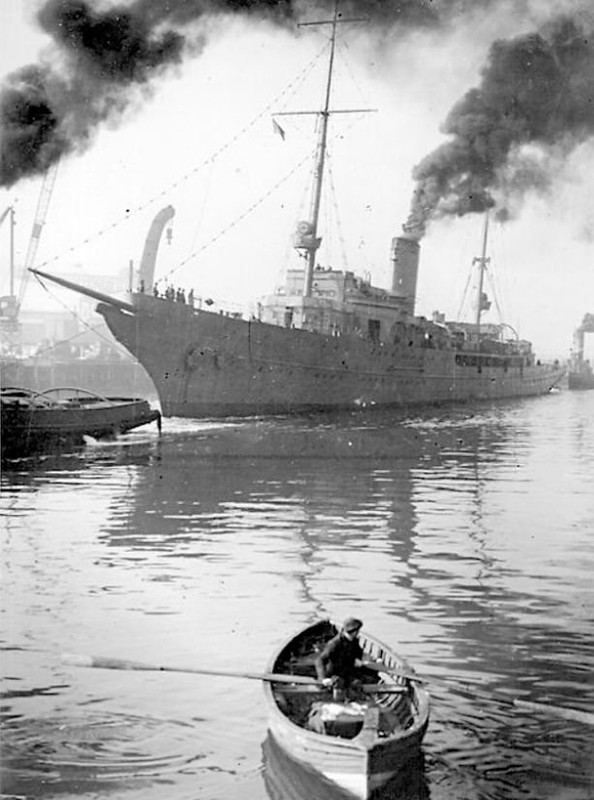
Doyle revealed that one of the German instruction manuals had not been translated correctly, leading to the wrong fuel oil being ordered before departure. Instead of using a light grade for the specially designed boilers, a heavier grade, normally used on British ships, was used on board.
The engineer recalls, “The boilers were lit, creating a smoke screen like that of a destroyer in wartime.” The burning oil triggered huge plumes of black smoke from the chimney and a small fire in the engine room.
With adequate oil supplies available in Hull, Grille was towed to Alexandra Dock under the direction of Humber pilot Vince Howard, who took the maneuver in hand to ensure she didn't break down on the estuary sandbanks.
Vince had been at sea since the age of 16, initially in the Merchant Navy before being called up for service in the Royal Navy the week before the outbreak of the Second World War, having become a Humber pilot four years earlier.
His military career included mine clearance in the English Channel and Suez Canal, and radar missions aboard HMS Orion during the Battle of Cape Matapan off the Greek coast in 1941, when Allied naval forces defeated the Italian navy. On D-Day, he was aboard a gunboat supporting the landings of the Green Howards and the East Yorkshire Regiment, and later served as Executive Officer of HMS Lamont , a landing ship on loan to the Australian Navy carrying thousands of troops to the Pacific in over 20 operations against the Japanese.
His Royal Navy service was extended until April 1946, when he resumed his work as pilot of the Humber. After safely mooring Grille at Alexandra Dock, Vince remained on board while arrangements were made to offload the engine fuel to a waiting barge and refill the tanks with the correct grade at one of the nearby Saltend jetties. He would later regale regulars at the Crown and Anchor pub in Elstronwick, which he took over after his 43-year career at sea, with stories of him sleeping in Eva Braun's bed during Grille's stay in Hull.
In fact, the boudoir said to have been used by Hitler's mistress was another of the more colorful pre-war myths aboard the ship. Although the ship features an exact replica of Hitler's suite, there is no official record of Braun's presence on board.
In total, the Grille spent eight days in Hull, as refueling operations in Saltend were disrupted by bad weather. It finally arrived in Genoa almost two months later, still in tow.
Engineer Doyle's account of the rest of the voyage records a series of mechanical problems, including further boiler and engine failures, shortages of drinking water and food, severe storms and the decision by most of the crew, during their stopover in Lisbon, to accept an offer from the owner to pay for their immediate return home.
The Grille's days as a private luxury yacht were short-lived. In 1949, the ship sailed for New York and was sold for scrap to the North American Smelting and Refining Company two years later. On her final voyage to a scrapyard on the Delaware River, she was towed again, the metal recovered being reused in the manufacture of items for the US Army. However, some items were removed and sold to eagle-eyed souvenir hunters, including a white porcelain toilet bowl that ended up in a New Jersey auto repair garage.
https://toilet-guru.com/hitler.html